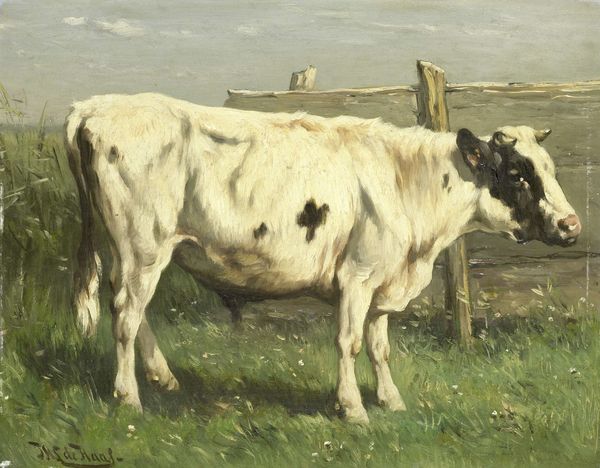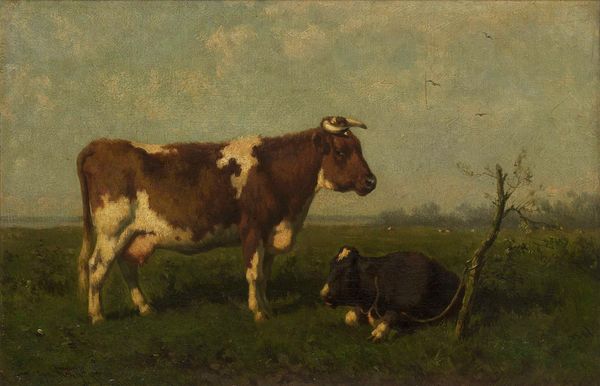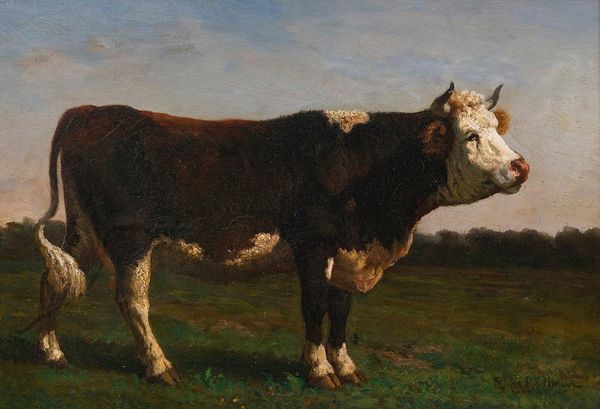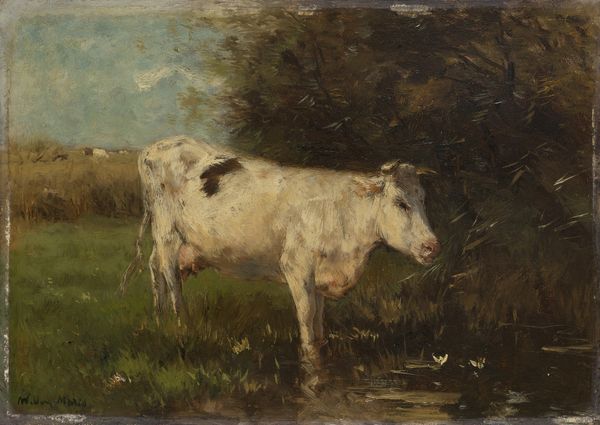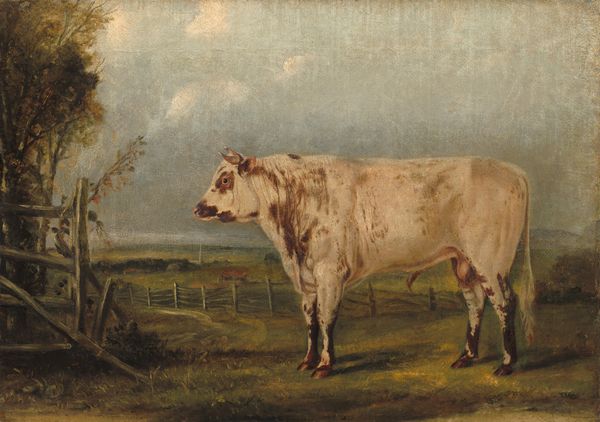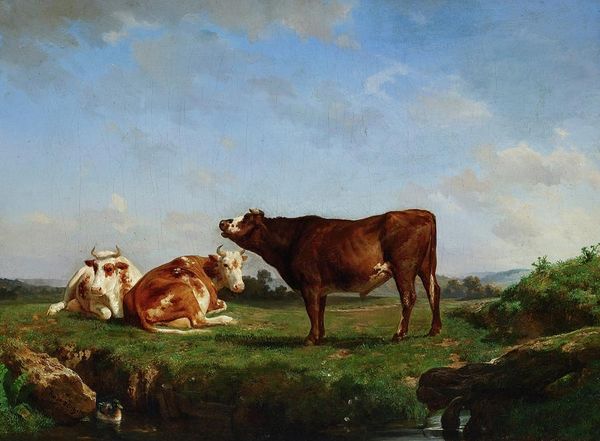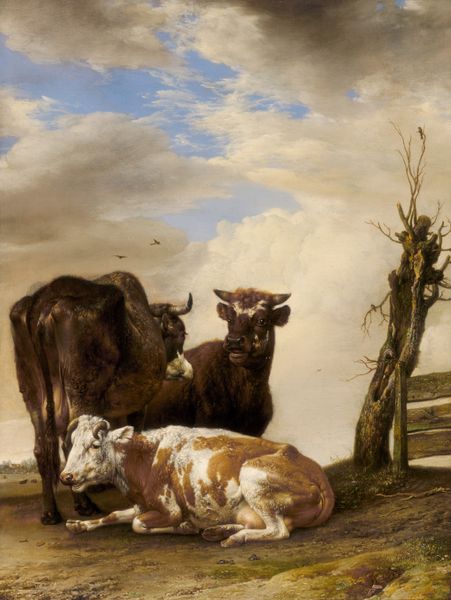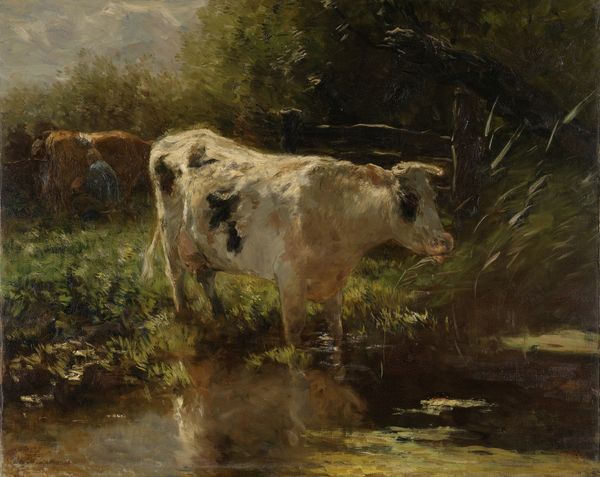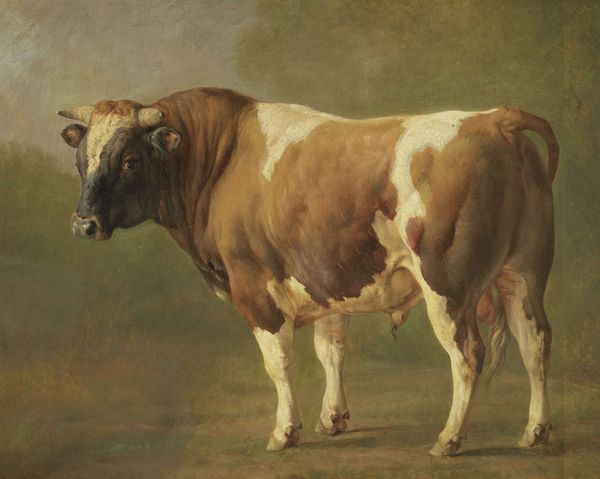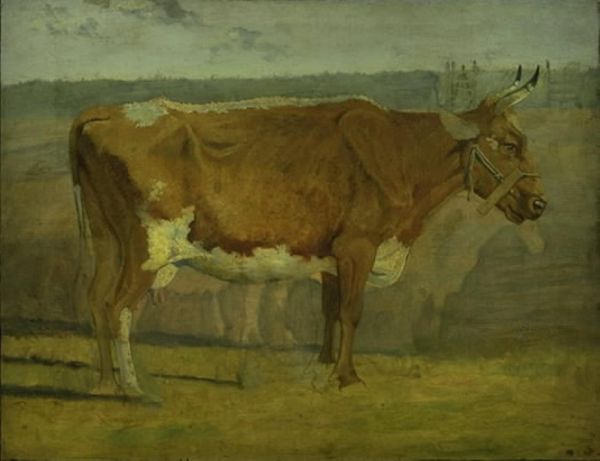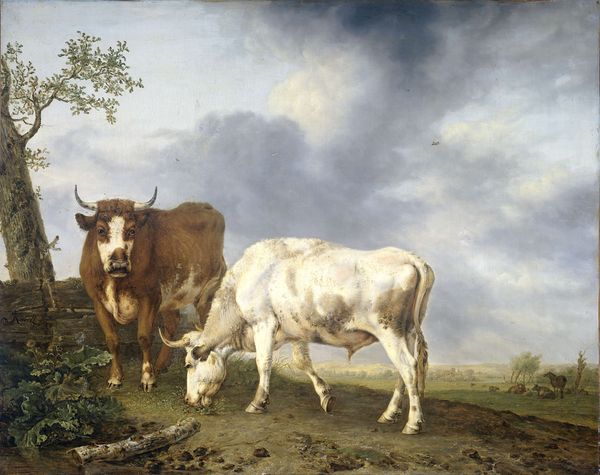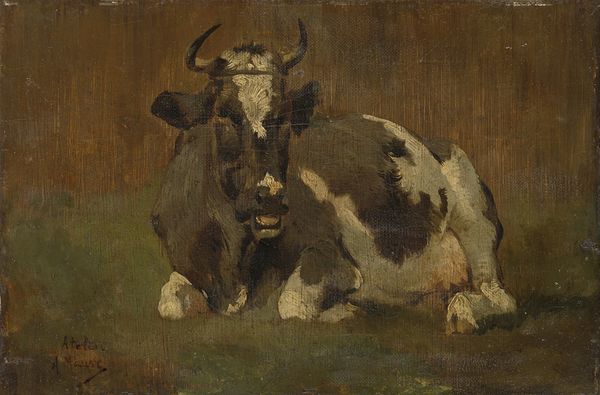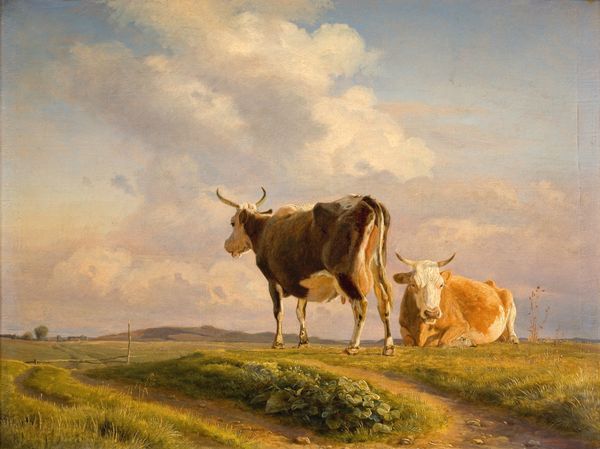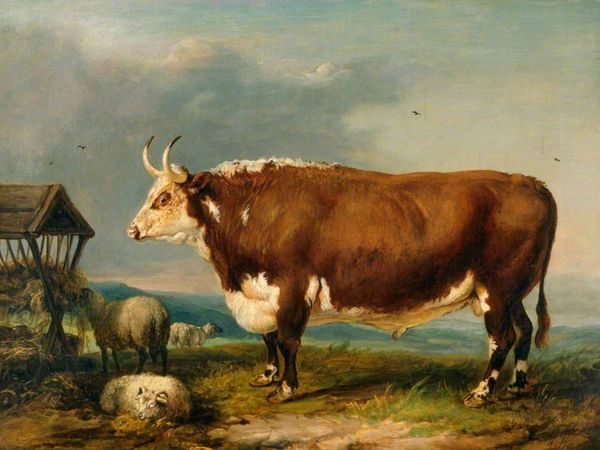
painting, oil-paint
#
portrait
#
painting
#
impressionism
#
oil-paint
#
landscape
#
oil painting
#
animal portrait
#
genre-painting
#
realism
Dimensions: 56.6 × 83.5 cm (22 1/4 × 32 7/8 in.)
Copyright: Public Domain
Editor: So, here we have Emile van Marcke's "Study of a Cow," likely painted between 1870 and 1890, rendered in oil paint. It’s…striking how much the artist focuses on this one cow, making it a sort of agricultural portrait. What do you see in it? Curator: Immediately, I consider the means of production. It's oil on canvas, but the *how* is key. Van Marcke, part of the realist tradition and moving toward Impressionism, is embedded in the agricultural system. Think about the implications. Oil paints themselves— linseed oil, pigments—reflect a system of extraction, processing, and commerce. Editor: That’s interesting; I hadn’t considered that! It made me think of my family farm, in a way. Curator: Exactly! This wasn't simply an aesthetic choice; the availability and cost of materials would have profoundly impacted the subject. Consider, also, the implied labor. Farming itself – the cow's existence relies on a complex cycle of care. It's tied to social class and the hierarchy of rural life, isn’t it? Editor: It is. So you're saying that just by depicting this scene and by using these materials, the artwork is already making a statement? Curator: Precisely! This seemingly simple image reveals the intricate material and social relations underpinning the late 19th century. Even the way he applies the paint; notice how he renders texture and form; is linked to a broader economic reality. Editor: This has given me a completely different way to think about it. Thanks so much! Curator: My pleasure. Considering the materiality brings new depth, right?
Comments
No comments
Be the first to comment and join the conversation on the ultimate creative platform.
